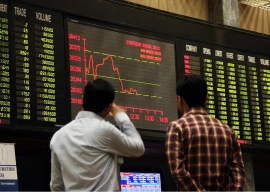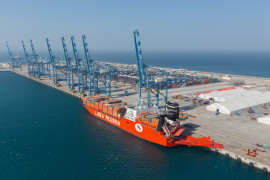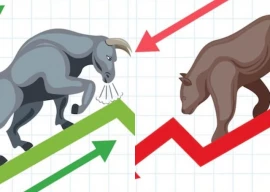
“The 6.2% target for real GDP (gross domestic product) growth seems unachievable (in FY19),” the central bank said in its first-quarter report on the state of Pakistan’s economy for fiscal year 2018-19 issued on Tuesday.
The country hit a 13-year high economic growth of 5.8% in the previous fiscal year, but “at the cost of widening macroeconomic imbalances as manifested in the five-year high fiscal deficit and a record high current account deficit,” the central bank said earlier.
The LSM sector dropped 1.7% in the first quarter (July-September 2018) of the current fiscal year compared to 9.9% growth in the same quarter last year due to interest rate hikes, massive rupee depreciation against the US dollar and reduction in the government’s development budget.
Such measures were taken to fix the macroeconomic imbalances like the twin deficit. Simultaneously, they negatively impacted LSM and the agronomy.
“In fact, the large-scale manufacturing contracted for the first time in over seven years during Q1-FY19,” the SBP said in its first-quarter report. Furthermore, important budgetary measures such as the imposition of ban on high-value property and new car purchases by non-filers of tax returns restricted activity in these sectors. The government in the recent second mini-budget has, however, allowed the non-filers purchase of new cars up to 1,300cc.
Within the agriculture sector, preliminary estimates indicate that production of all major Kharif crops has remained lower compared to the last season.
“This decline can be attributed primarily to an alarming water availability situation, particularly in Sindh, which led to a 7.7% decline in the total area under production. Furthermore, crop yields also suffered due to subdued fertiliser offtake amidst rising prices of both urea and DAP,” the central bank said. The uptrend in international oil prices during the first quarter remained a big challenge for the economy as that resulted in an unwanted growth in the oil import bill. Pakistan meets around 70-80% of energy needs through imports.
Immediate challenges
Although the economy is responding to the stabilisation measures taken over the past few months, boosting foreign currency reserves and controlling inflation would remain the two near-term challenges to the economy, it said.
“Average inflation during Q1-FY19 increased to 5.6% - the highest quarterly growth since Q1-FY15,” it said. The SBP projected the inflation (Consumer Price Index) at 6.5-7.5% for the full fiscal year against the target of 6%.
Besides, narrowing down the continuously widening fiscal account deficit would remain a tough challenge for the economic managers. The fiscal deficit widened to Rs541.7 billion in the first quarter compared to Rs440.8 billion in the corresponding period of last year. “This was mainly because revenue collection could not keep pace with growing current expenditures.
“This increase came on the back of a steep rise in current spending (mainly debt servicing and defence), which more than offset marginal gains in the revenue collection,” the SBP said. The central bank projected the fiscal deficit at 5.5-6.5% in FY19 compared to the target of 4.9%.
Silver lining
The downturn in international oil prices has emerged as a blessing for the domestic economy. This is expected to help narrow down the current account deficit.
“The most important development has been the bearish spell in the global crude market that began in early October and ran through the rest of Q2-FY19. Oil prices have fallen by a quarter during this period and reached a year’s low level of $54 per barrel. This will lift some pressure from Pakistan’s oil import bill in at least the second quarter of the year,” the SBP said.
At the same time, exports may gain from exchange rate depreciation and increase in consumer spending in the advanced economies, but their momentum could possibly be weakened by rising cost pressures. Still, the estimates for overall foreign exchange earnings are on the higher side as worker remittances are projected to sustain a high growth. “Resultantly, the overall current account deficit is expected to narrow down to 4.5-5.5% of GDP (in FY19),” it said.
Published in The Express Tribune, January 30th, 2019.
Like Business on Facebook, follow @TribuneBiz on Twitter to stay informed and join in the conversation.


















COMMENTS
Comments are moderated and generally will be posted if they are on-topic and not abusive.
For more information, please see our Comments FAQ